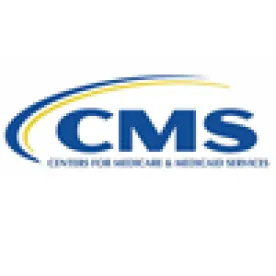CMS said it plans to audit risk-adjustment payments that Medicare Advantage (MA) plans received based on having identified additional diagnoses in beneficiary medical chart reviews. CMS’s action was spurred by a recent report from the HHS Office of Inspector General (OIG) entitled, “Billions in Estimated Medicare Advantage Payments From Chart Reviews Raise Concerns.” (Click here for the report).
As the OIG’s report explains, MA insurers receive risk-adjustment payments, based in part on diagnoses, to account for the differing levels of the health of their beneficiaries. This process “levels the playing field for [MA insurers] that enroll sicker beneficiaries who need more costly care.” Doctors and other providers initially submit payment claims with diagnoses to the MA insurers, who submit that data to CMS’s encounter data system. MA insurers may also conduct after-the-fact chart reviews to improve accuracy by adding diagnoses that providers originally missed or deleting others submitted in error. Importantly, per CMS rules, added diagnoses are either supposed to be linked to previously accepted service records or, if unlinked, be supported by documentation from a face-to-face visit.
The OIG audited a recent year’s MA encounter data for diagnoses changes MA plans had made through the chart-review process. The OIG concluded that $2.7 billion in risk-adjustment payments were based on chart reviews identifying additional diagnoses that were not linked to any service records. Further these diagnoses may have lacked a proper support in the medical record showing an actual timely visit related to the diagnosed condition. If such support were in fact lacking, the OIG says the payments were improper. The OIG also concluded that about $2B off the $2.7B went to ten unnamed MA parent organizations among the 137 reviewed.
Based on its findings, the OIG now recommends that CMS audit MA plan payments based on unlinked chart-review diagnoses and make some changes to its processes, including possibly limiting the use of unlinked chart reviews.
While CMS didn’t completely agree with the OIG’s estimated totals of payments, it agreed conceptually with the OIG’s analysis and said that it plans to follow the recommendations. Among other things, CMS will soon audit the beneficiaries with unlinked chart reviews the OIG identified for possible further outreach to the MA organizations involved. CMS also plans to include chart review diagnoses in its routine “Risk Adjustment Data Validation” (RADV) audits and to reconsider its policy of accepting unlinked chart reviews as a source of diagnoses for risk adjustment.
This OIG audit and CMS’s planned actions in response are part of CMS’s broader campaign to tighten oversight of MA payments. But it remains to be seen how CMS’s planned audits will play out. Currently, CMS has a policy, favorable to MA plans, of applying a “Fee-for-Service Adjuster” or “FFS Adjuster” when conducting RADV audits. The FFS Adjuster, which CMS adopted in 2012, tolerates a certain error rate in MA diagnosis codes equivalent to CMS’s estimated coding error rate for traditional Medicare Part A fee-for-service payments—the FFS Adjustor acts as buffer to achieve the “actuarial equivalence” between FFS rates and MA rates that the Medicare Act requires. However, CMS has recently proposed to get rid of the FFS Adjuster, retroactively, for audits of MA payments going way back to 2011. See Medicare and Medicaid Programs; Policy and Technical Changes to the Medicare Advantage, Medicare Prescription Drug Benefit, Program of All Inclusive Care for the Elderly (PACE), Medicaid Fee-For-Service, and Medicaid Managed Care Programs for Years 2020 and 2021, 83 Fed. Reg. 54,982 (Nov. 1, 2018). Facing strong pushback from the industry, CMS delayed finalizing that proposal and is still evaluating comments. If CMS does eliminate this critical buffer, it is almost guaranteed that adversely affected MA plans will challenge the change in court.




 />i
/>i

